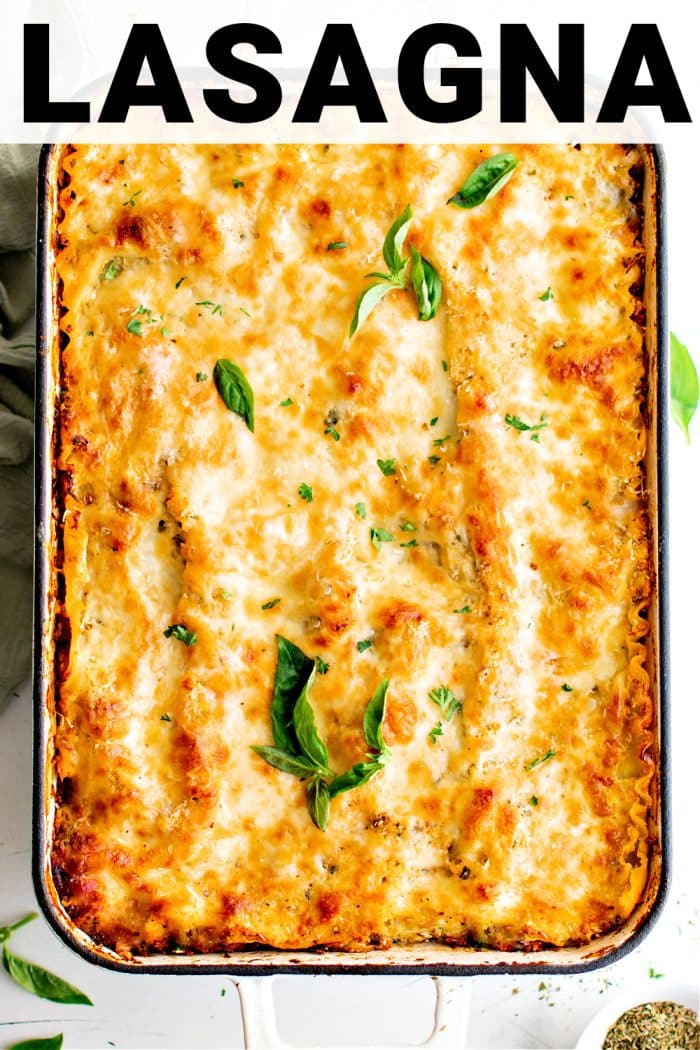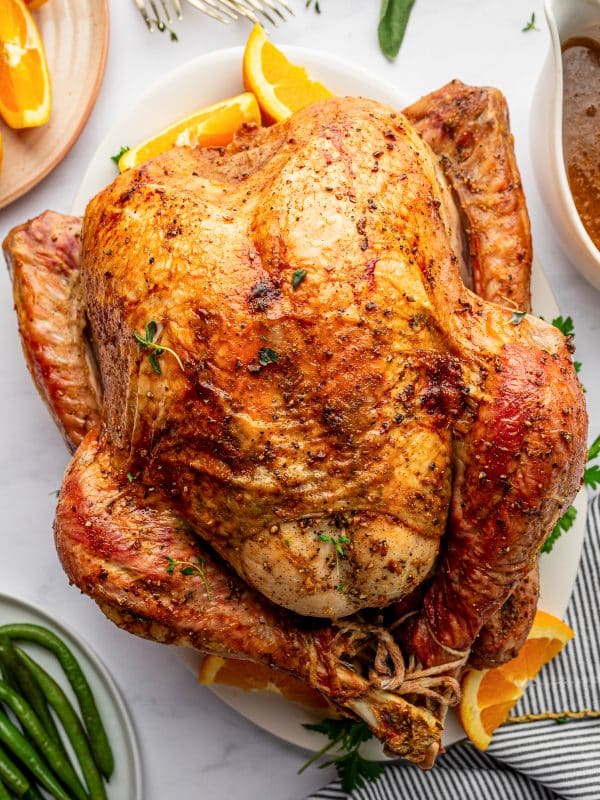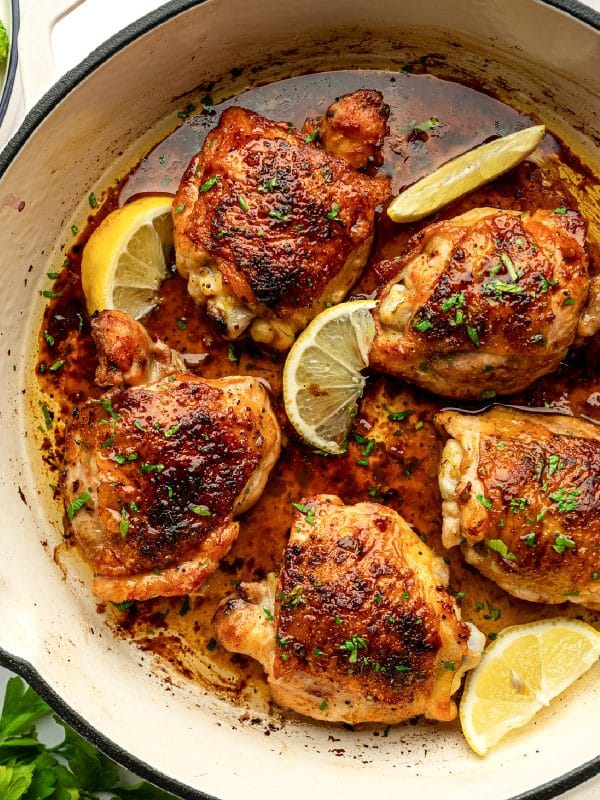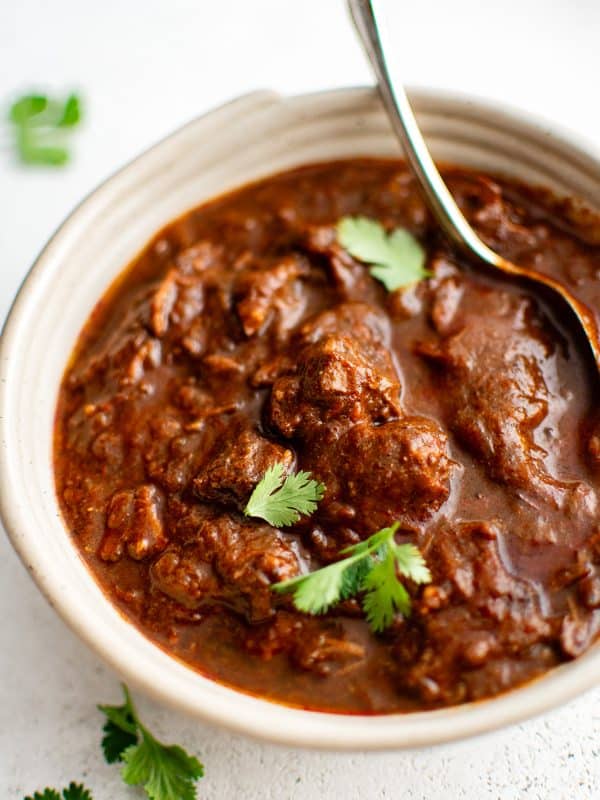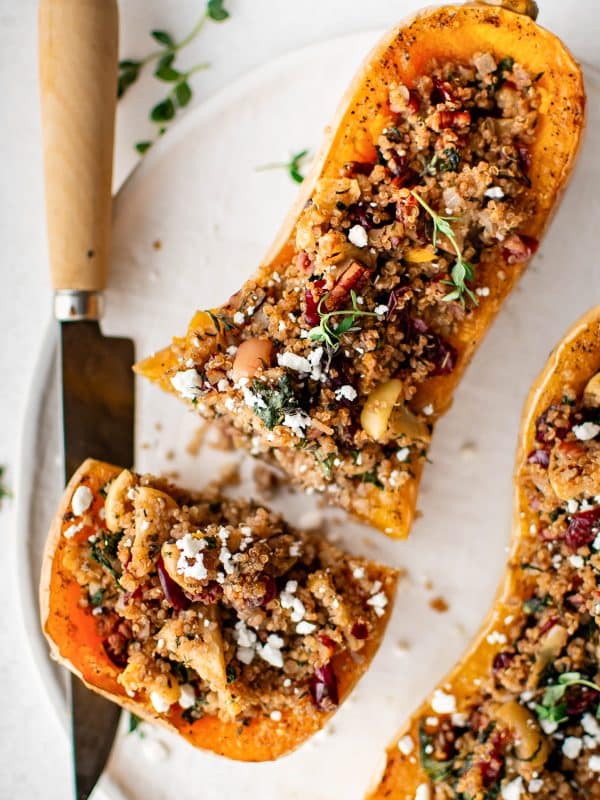This post may contain affiliate links. See my disclosure policy.
Nothing beats this Homemade Lasagna Recipe with its alternating layers of meat sauce, tender sheets of pasta, creamy ricotta filling, and gooey melted cheese! It’s the ultimate comfort food, great for family dinners, and freezes well!
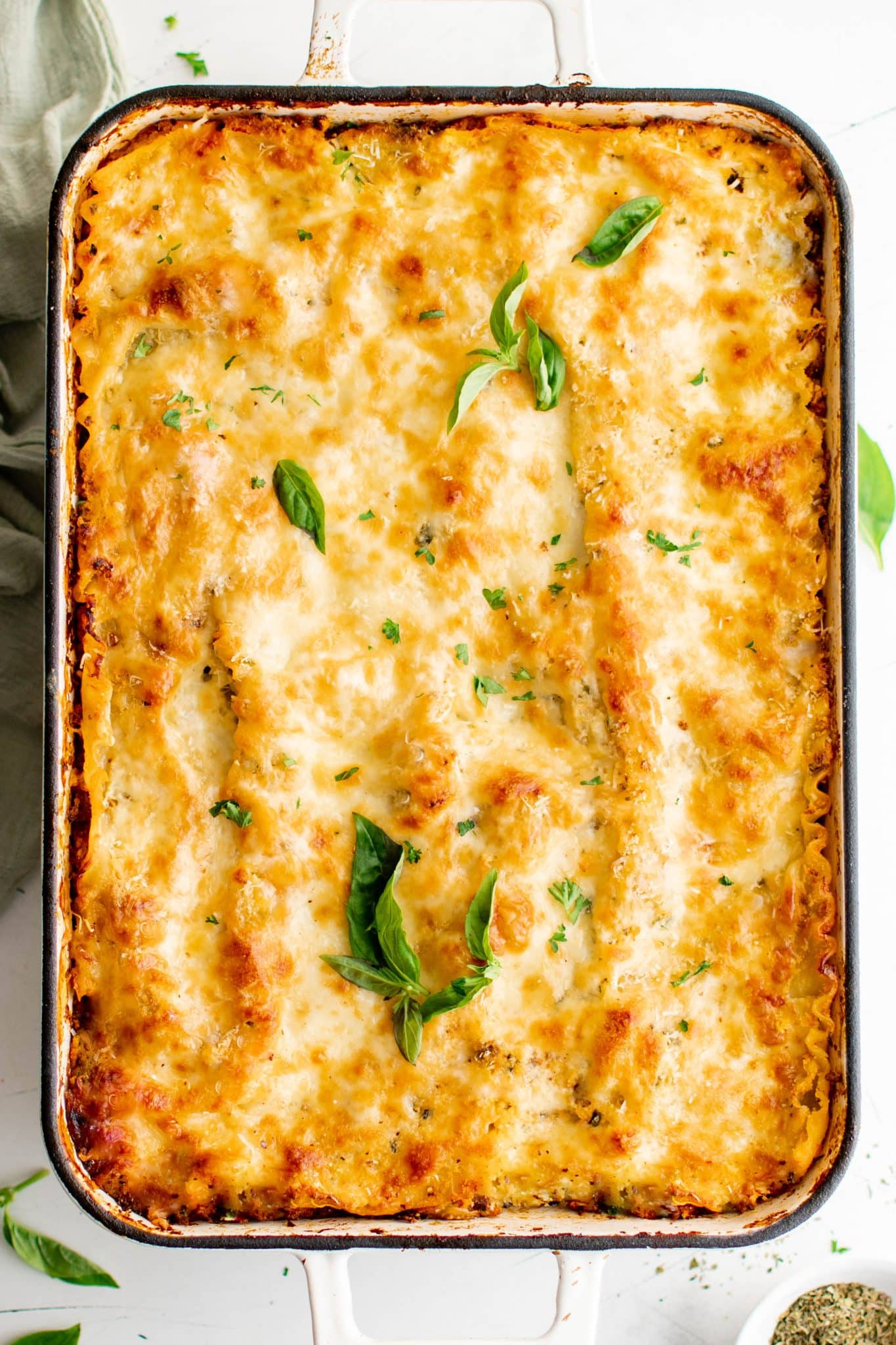
Cheese, cheese, and more cheese! This Classic Lasagna doesn’t mess around! The rich meaty sauce is a combination of browned ground beef and ground Italian sausage, fresh herbs, Italian seasoning, and tomato-based ingredients. Feel free to make your own marinara sauce for this lasagna recipe.
Table of Contents
This restaurant-quality lasagna is elevated with a ricotta cheese mixture as the third layer. It is then topped with a sprinkle of shredded mozzarella and parmesan that oozes between the layers and bubbles as a final topping. Broil the lasagna for a few minutes to achieve an irresistible light golden finish.
Using oven-ready noodles adds convenience when assembling this lasagna. It stores well in the fridge and freezer and tastes just as delicious when reheated. It’s the perfect crowd-pleasing cozy dish to add to your dinner rotation.
If you love the flavors and texture of classic lasagna, be sure to try this lasagna soup recipe and butternut squash lasagna recipe.
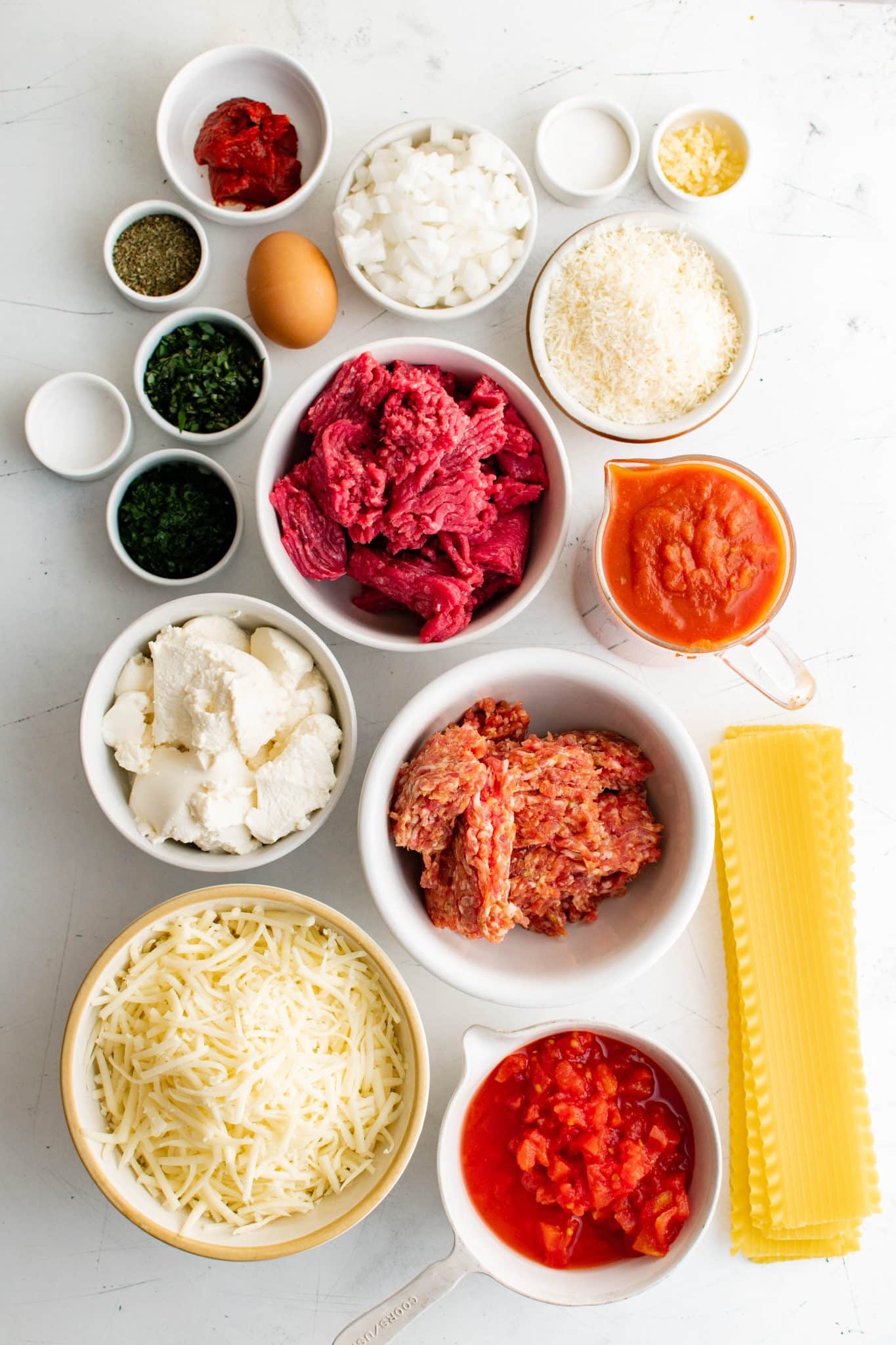
Key Ingredients
Find the printable recipe with measurements in the recipe card below.
Classic meat lasagna has four layers: the meat sauce, lasagna noodles, ricotta mixture, and shredded cheese topping.
- Meat sauce – The rich meat sauce for this classic lasagna recipe consists of ground beef, ground sausage, onion, marinara sauce (homemade or store-bought), canned diced tomatoes, minced garlic, tomato paste, parsley and basil, ground Italian seasoning, and salt.
- Lasagna noodles – You can use oven-ready or regular lasagna noodles. I love oven-ready (also known as no-boil lasagna noodles) because they don’t require pre-boiling and you don’t have to worry about the noodles sticking together.
- Cheese mixture – My white sauce for this lasagna recipe consists of ricotta cheese, egg, and sugar. The egg acts as a binder in this sauce.
- Shredded cheese topping – Freshly shredded mozzarella cheese and parmesan cheese become the fourth layer in this lasagna dish. Provolone and Romano cheese are also fantastic options.
No-Boil or Boil Lasagna Noodles
Choosing between no-boil and traditional boil lasagna noodles depends on convenience, texture preference, and recipe.
- No-Boil Lasagna Noodles: The obvious choice for saving time as there’s no need to boil these noodles before adding them to the lasagna. They absorb the flavors of the sauce and are less likely to become mushy; however, you will probably need more sauce (or a thinner sauce) to ensure the noodles cook properly.
- Boil Lasagna Noodles: Boiling your own lasagna noodles allows you to control the texture of your noodles more precisely. Once boiled, they are easier to work with, especially if you are working with thicker, less moisture-rich ingredients. That said, they are a pain to cook and can stick together.
When I’m not in a hurry, I prefer to make my lasagna with traditional boil noodles. I cook them in batches until al dente, then remove them with cooking tongs to a large sheet of aluminum foil sprayed with non-stick cooking spray.

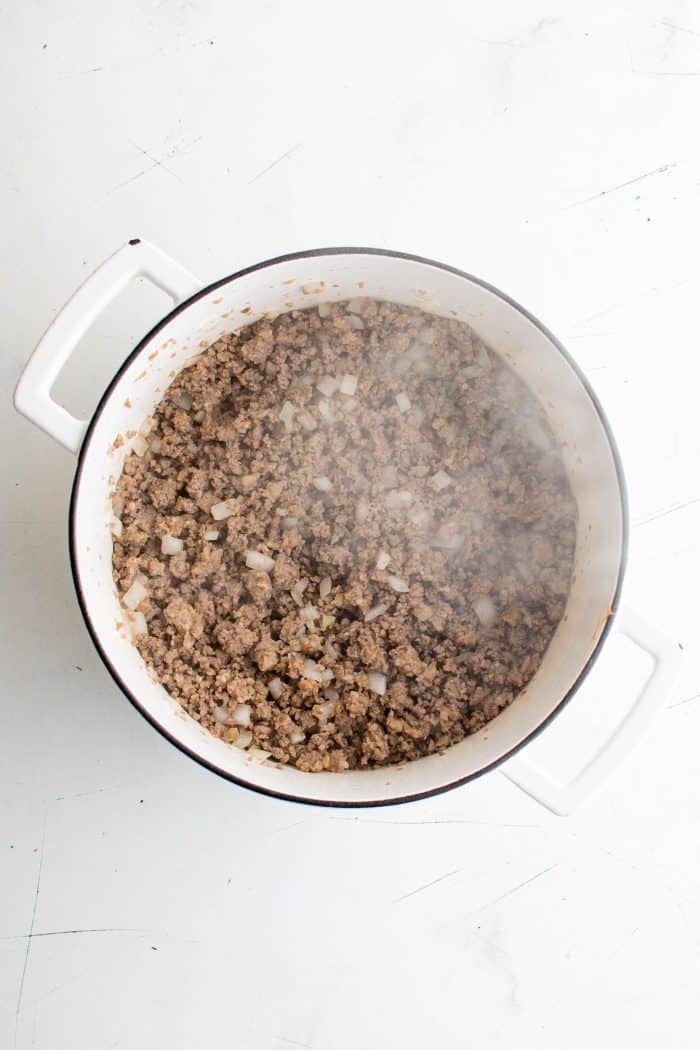
How to Make Lasagna
1. Brown the Meat: Brown the beef and sausage in a large pot over medium-high heat for about 6 minutes. Use a spatula to break the mixture apart into small pieces as it cooks.
2. Add the Onion: Add the onion and cook for 3 minutes or until it’s translucent.
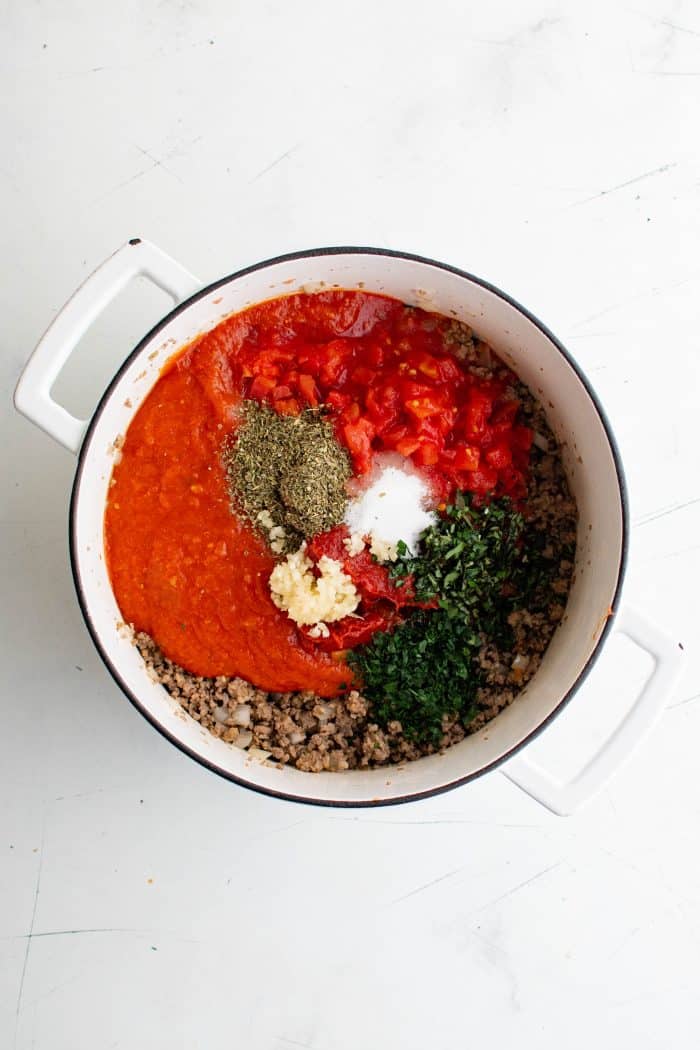
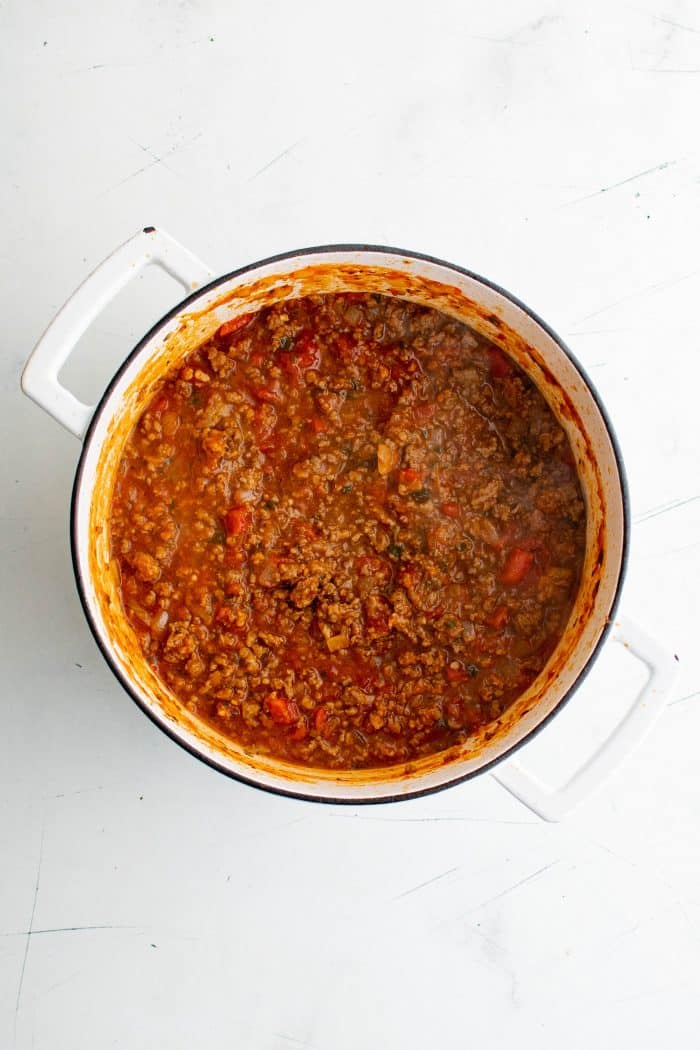
3. Mix in the Sauce and Seasoning: Stir in the marinara sauce, tomatoes, garlic, tomato paste, 1 tablespoon of parsley, 1 tablespoon of basil, Italian seasoning and salt. Simmer on low heat for a minimum of 30 minutes or up to 4 hours. Allow the sauce to reduce while stirring occasionally.
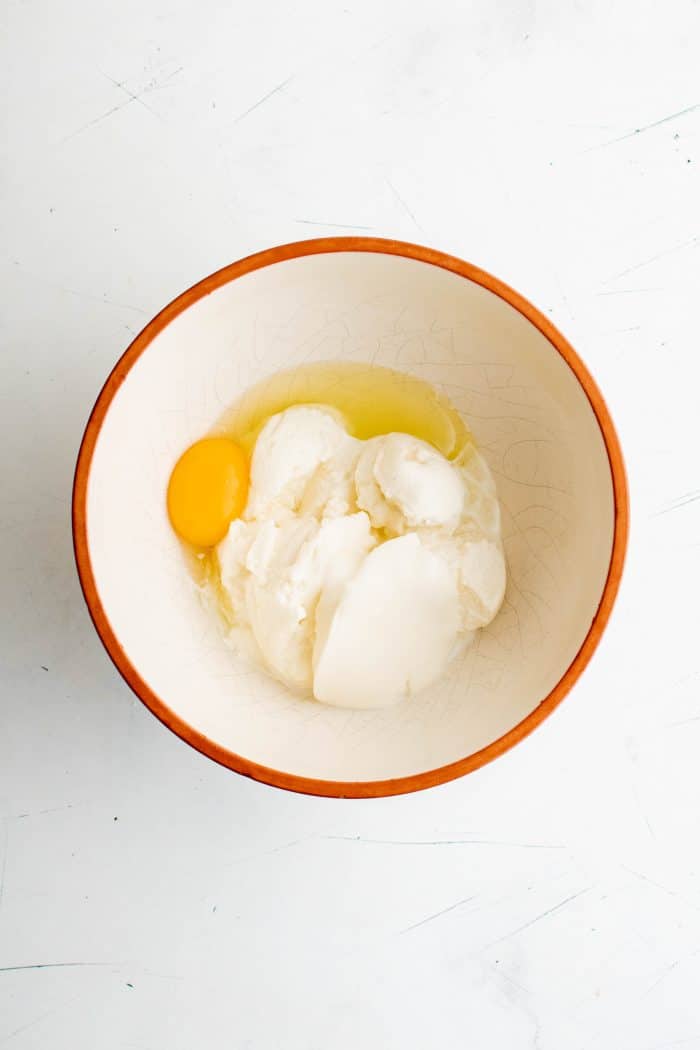
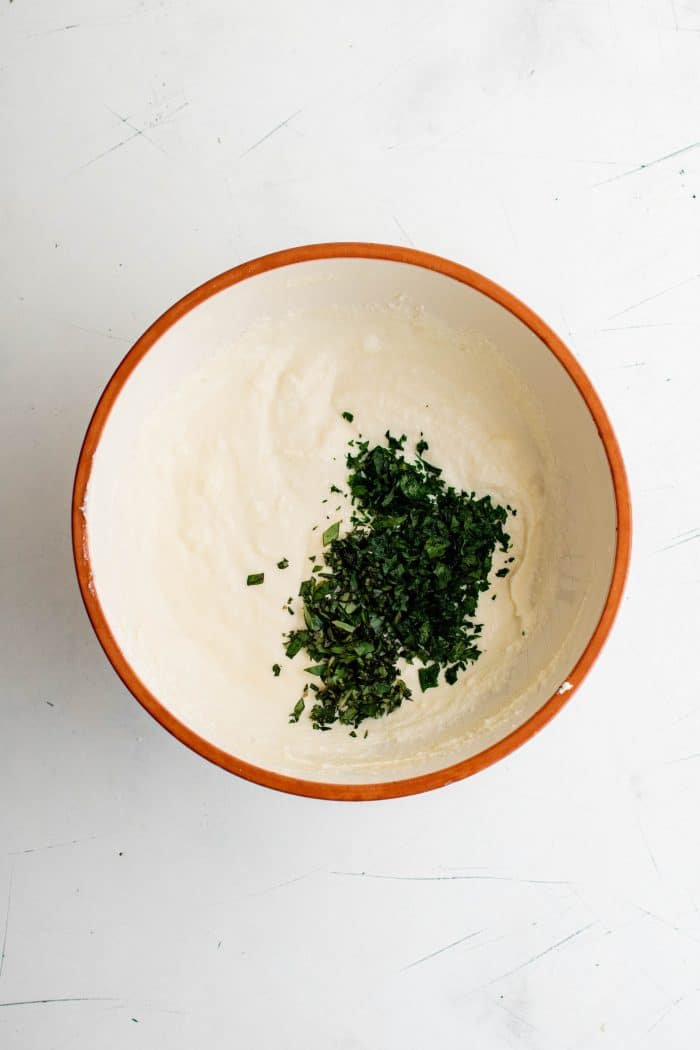
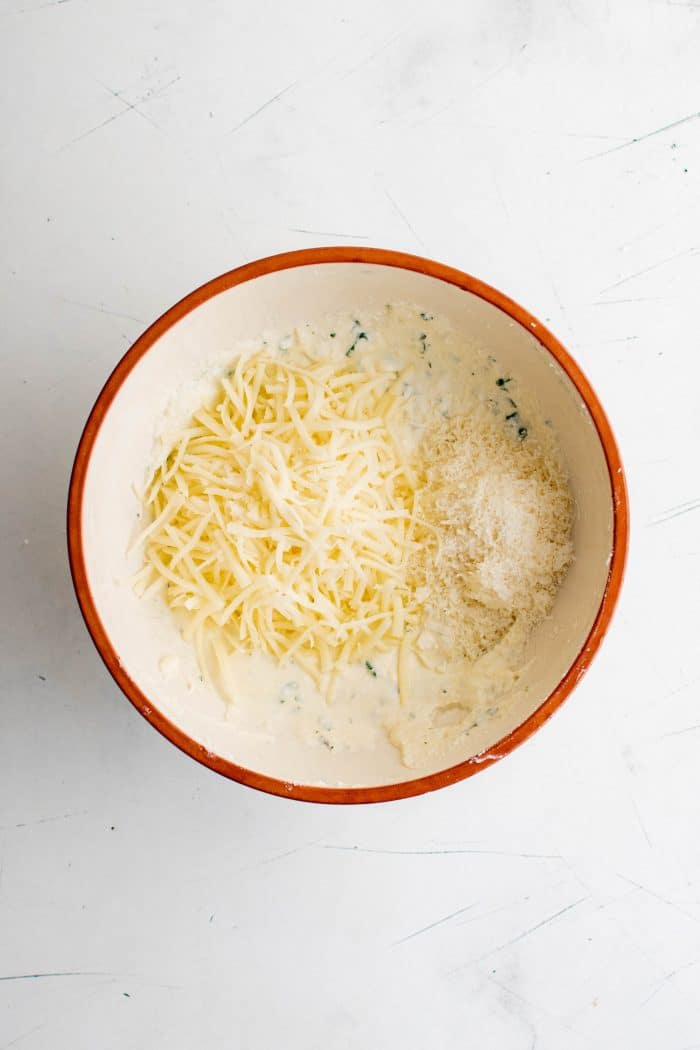
4. Combine the Cheese Mixture: Preheat the oven to 350 degrees F and mix the ricotta cheese, egg, and sugar in a medium bowl. Mix in the remaining herbs, 1 cup of mozzarella cheese, and ¼ cup of parmesan cheese. Set aside.
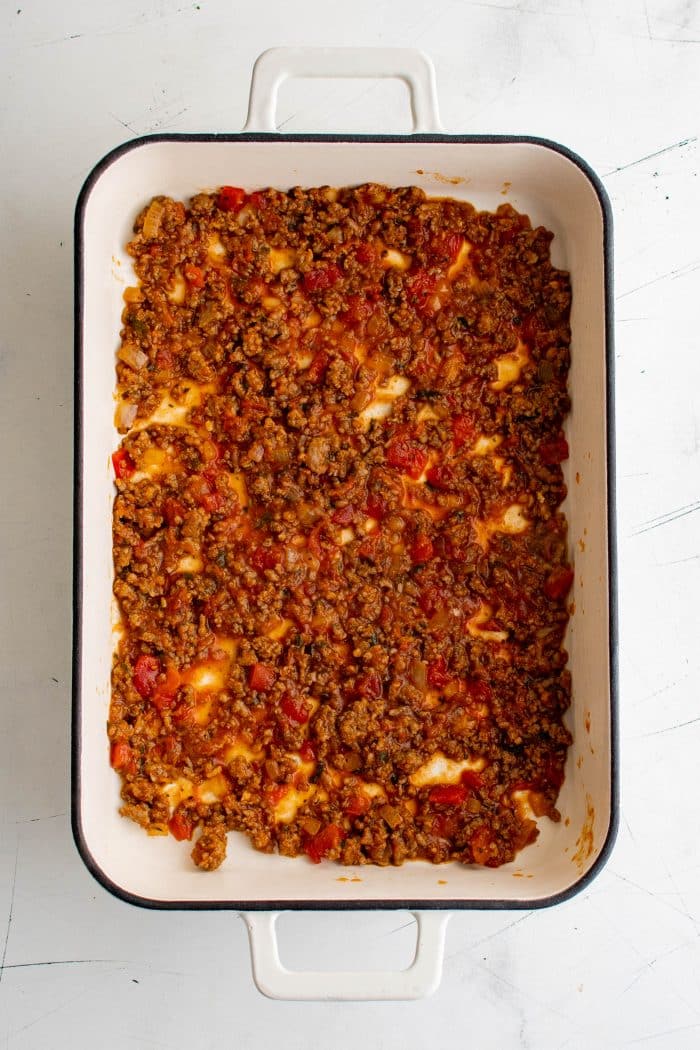

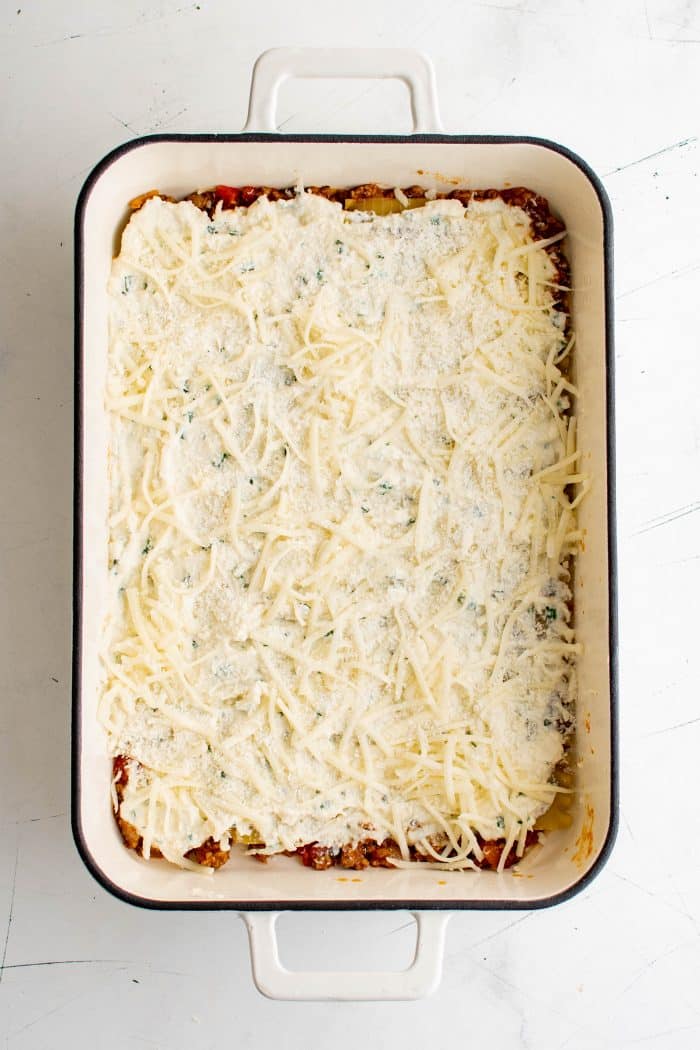
5. Assemble the Lasagna: Spread a layer of meat sauce in a large 9×13 inch baking pan or casserole dish, followed by a layer of lasagna noodles on top. Spread ⅓ of the ricotta cheese mixture over the noodles and sprinkle ⅓ of the remaining mozzarella and parmesan on top. Repeat this layering until you reach a final layer of the cheese mixture with shredded cheese on top.
6. Bake the lasagna: Cover the pan with foil and bake for 45-55 minutes or until the cheese is melted and bubbly. For a more golden cheese topping, broil the lasagna for the last 2 minutes.
7. Cool and garnish: Once baked, allow the lasagna to cool for at least 10-15 minutes and garnish with freshly minced parsley and fresh basil leaves if desired.
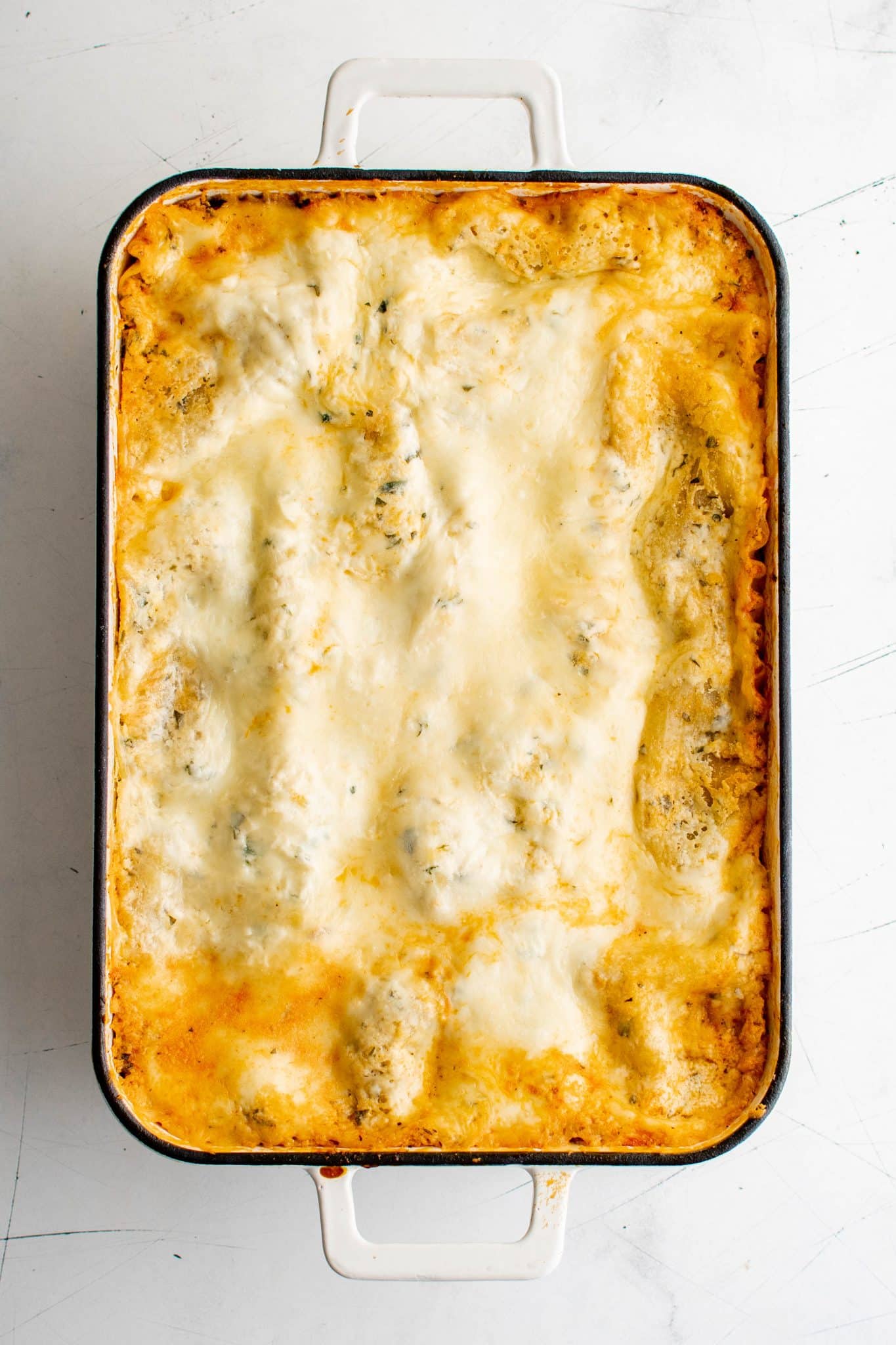
What is the Correct Order to Layer Lasagna?
- Start with the sauce: A thin layer of sauce prevents the lasagna from sticking and ensures there’s moisture to cook the noodles if you’re using no-boil noodles.
- Layer the noodles: Place a single layer of noodles on top of the sauce. You will need to boil pre-cooked noodles according to the package instructions first, but you can use no-boil noodles directly from the package.
- Add the ricotta mixture: Gently spread the ricotta mixture over the lasagna noodles.
- Sprinkle with cheese: Add as much or as little shredded mozzarella and grated Parmesan cheese on top of the ricotta mixture.
- Repeat the layers: Sauce, noodles, ricotta, and cheese.
Recipe Tips
- Add other cheeses: If you love super creamy, cheesy lasagna, add 7.5 ounces of creme fraiche to the ricotta mixture.
- Rest your lasagna: Allowing your lasagna to rest for 10-15 minutes before cutting into it will enable it to set, making it easier to serve and ensuring the layers don’t slide off as easily.
What to Serve with Homemade Lasagna
Serve this hearty and comforting classic lasagna with a delicious side salad, such as this caprese salad, lettuce and tomato salad, or arugula salad with shaved parmesan.
For a healthy boost to your plate, pair your lasagna with sauteed zucchini, roasted eggplant, roasted Brussels sprouts, or sauteed mushrooms.
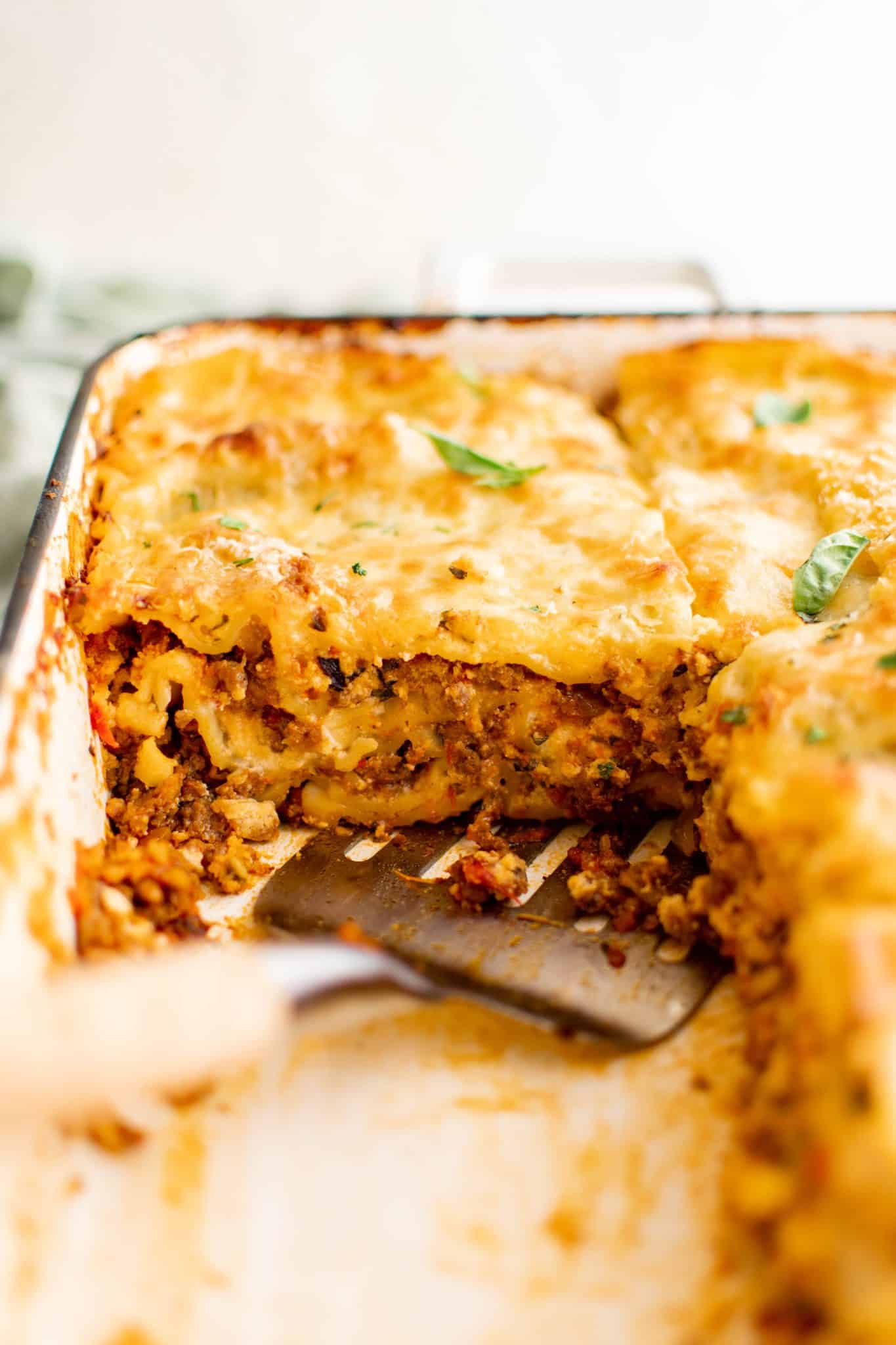
How to Freeze and Reheat Lasagna
Lasagna can be frozen – baked or unbaked.
- To freeze unbaked lasagna – Allow the ingredients to cool before assembling the lasagna in a freezer-to-oven-safe dish (glass or metal baking dishes are good choices). For convenience, use disposable foil trays. Wrap the entire dish tightly with plastic wrap, pressing down gently to remove as much air as possible. Then, cover tightly with aluminum foil. Place it in the freezer for up to 3 months.
- To freeze baked lasagna – Allow the lasagna to cool to room temperature. (Optional – you can cut the lasagna into individual portions.) Wrap each portion or the entire lasagna tightly in plastic wrap. Then, cover tightly with aluminum foil. Place it in the freezer for up to 3 months.
- To reheat frozen lasagna – You can bake the lasagna straight from frozen or let it thaw overnight in the refrigerator. If baking from frozen, it may require an additional 30-60 minutes of cooking time. The center should reach an internal temperature of 165°F (74°C).
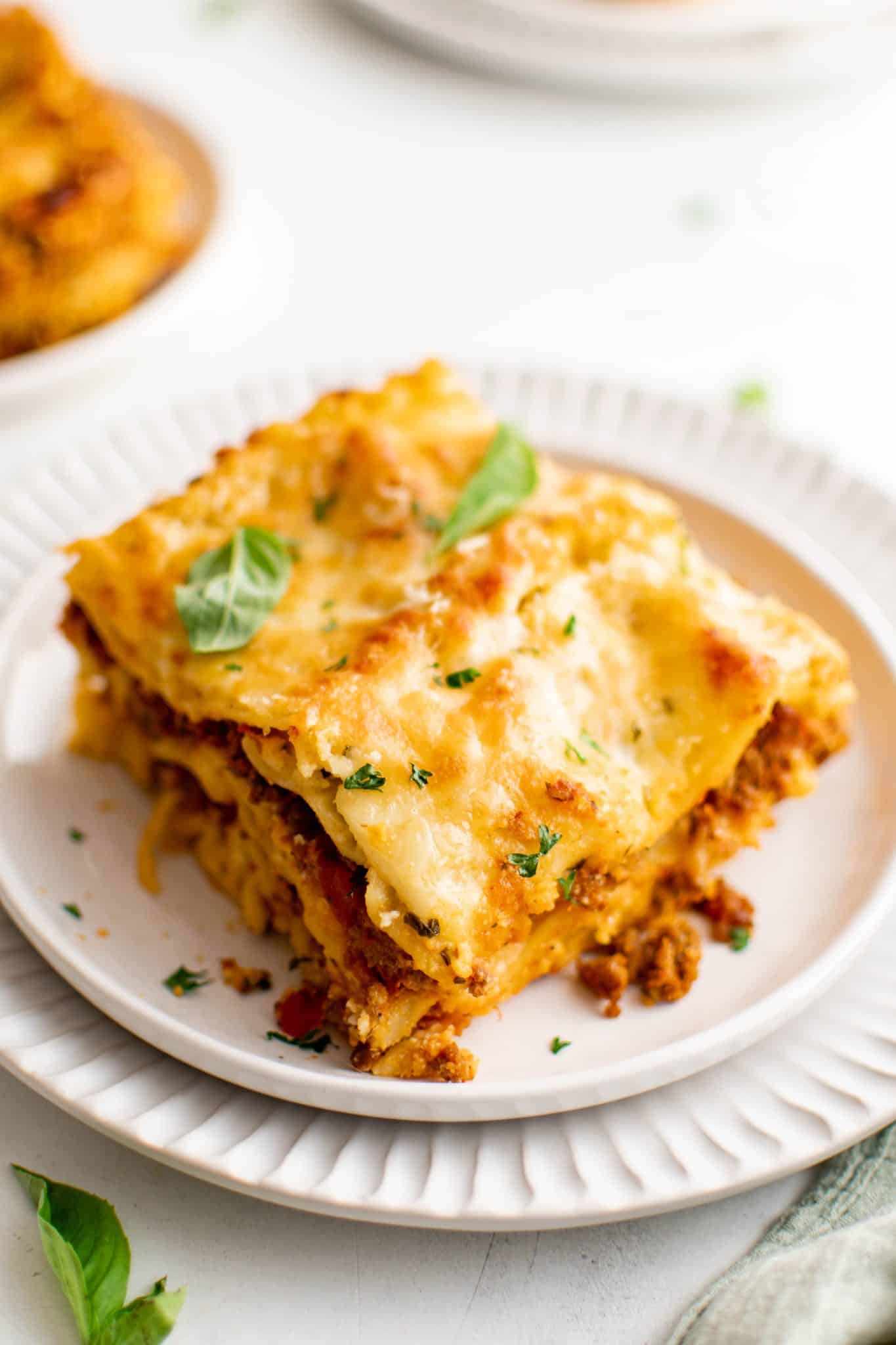
More Pasta Recipes
- Creamy Penne Pasta Recipe
- Shrimp Alfredo
- Pasta with Bacon and Peas
- Ground Turkey Pasta Recipe
- Creamy Cajun Shrimp Pasta
- Pasta Primavera Recipe
- Cacio e Pepe
- Spaghetti Carbonara Recipe
If you try making this Homemade Lasagna Recipe, please leave me a comment and let me know! I always love to hear your thoughts.
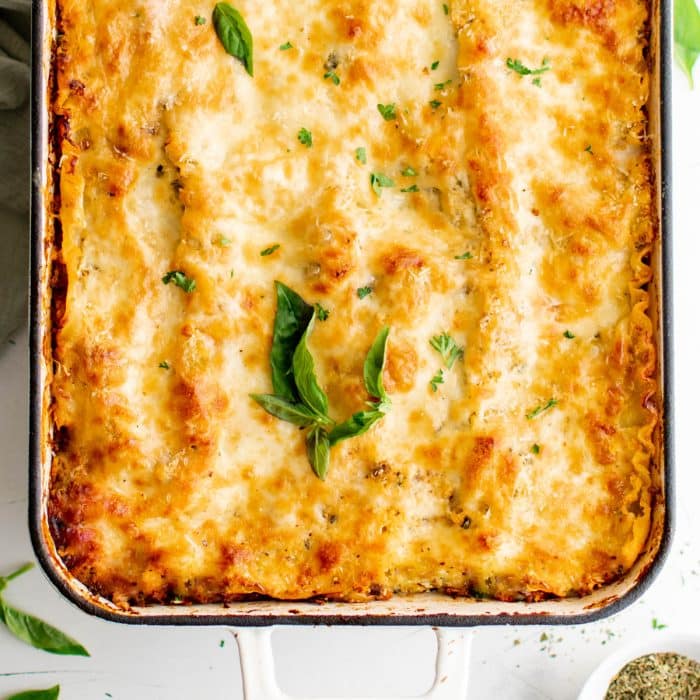
Easy Lasagna Recipe
Ingredients
- 1 pound ground beef
- 1 pound ground Italian sausage
- 1 small white onion, diced
- 1 (24-ounce) jar marinara sauce
- 1 (14.5-ounce) can diced tomatoes
- 4 cloves garlic, minced
- 2 tablespoon tomato paste
- 2 tablespoon freshly minced parsley, divided
- 2 tablespoon chopped fresh basil, divided
- 2 teaspoon Italian seasoning
- 1 teaspoon salt
- 1 (15-ounce) container ricotta cheese
- 1 large egg, whisked
- 2 teaspoon sugar, optional
- 24 ounces Mozzarella chees, freshly shredded, divided
- 1 cup Parmesan cheese, freshly shredded, divided
- 12 sheets lasagna noodles, oven ready or regular, see notes
Instructions
- Heat a large pot over medium-high heat then add the ground beef and sausage and cook until browned, about 6 minutes., using a spatula to break apart the meat while it cooks.
- Add the diced onion and cook for 3 minutes or until soft and translucent.
- Stir in the marinara sauce, tomatoes, garlic, tomato paste, 1 tablespoon of parsley, 1 tablespoon of basil, Italian seasoning and salt. Simmer on low heat for at least 30 minutes or up to 4 hours or until the sauce has reduced slightly, stirring occasionally.
- Preheat your oven to 350 degrees Fahrenheit.
- Just before assembling the lasagna, add the ricotta cheese, egg, and sugar to a medium bowl and mix well. Next, stir in the remaining parsley and basil, 1 cup of mozzarella cheese, and ¼ cup of parmesan cheese, mix well, and set aside.
- To assemble, spread a layer of the meat sauce in a 9×13-inch baking pan. Arrange the lasagna noodles on top of the sauce and spread ⅓ of the ricotta mixture over the noodles. Then, sprinkle ⅓ of the remaining mozzarella and parmesan on top.
- Repeat this process until there is a final layer of the cheese mixture with mozzarella and parmesan cheese on top.
- Cover the pan with aluminum foil and bake for 45-55 minutes or until the cheese is melted and bubbly.
- Optional: Broil the lasagna for 1-2 minutes or until the cheese is lightly golden on top.
- Remove the lasagna from the oven and allow to cool for 10-15 minutes before serving. Garnish with freshly minced parsley and fresh basil leaves if desired.
Notes
- If using regular lasagna noodles, boil them according to the package instructions, about 6-8 noodles at a time. Then transfer them to a baking pan with water, foil sprayed with non-stick cooking spray, or a large bowl filled with water so that they don’t stick to each other.
- If you love super creamy, cheesy lasagna, add 7.5 ounces of creme fraiche to the ricotta mixture.
- Store leftovers in an airtight container in the fridge for up to 4 days.
Nutrition
Nutrition information is automatically calculated, so should only be used as an approximation.
